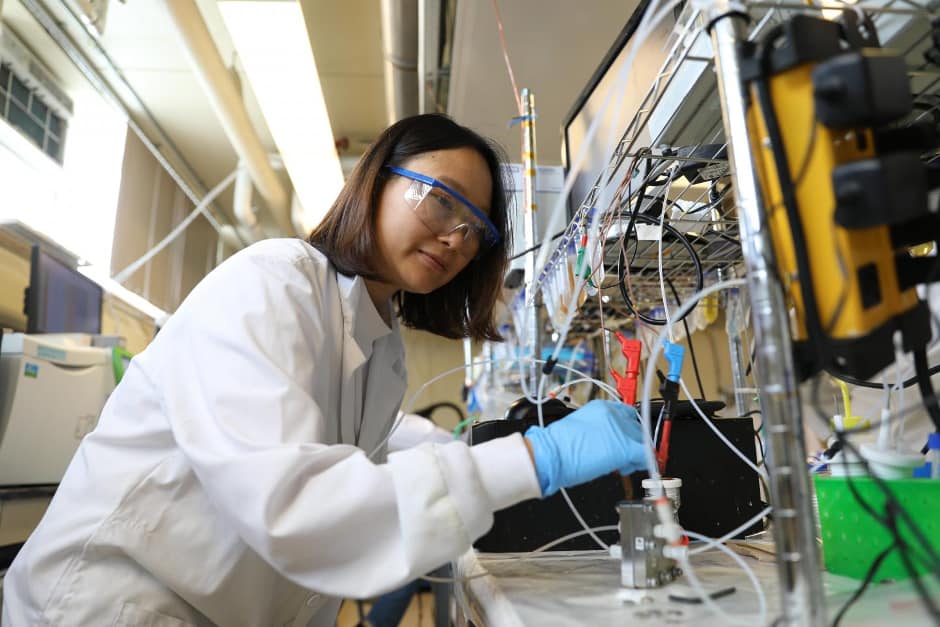Electrolyser turns CO2 from air into jet fuel
Carbon dioxide captured from air can be used to make products including jet fuel or plastics, but the process is energy intensive and costly.

Now, a team led by Prof Ted Sargent at the University of Toronto (U of T) has developed an electrochemical method of converting CO2 that increases overall energy efficiency by avoiding some of the more energy-intensive losses.
One company investigating direct-air carbon capture is Carbon Engineering whose pilot plant in Squamish, British Columbia, captures CO2 by forcing air through an alkaline liquid solution. The CO2 dissolves in the liquid, forming a carbonate.
To be fully recycled, the dissolved carbonate is normally turned back into CO2 gas, and then into chemical building blocks that form the basis of fuels and plastics. According to U of T, one way to do this is to add chemicals that convert the carbonate into a solid salt. This salt powder is then heated at temperatures above 900oC to produce CO2 gas that can undergo further transformations. The energy required for this heating drives up the cost of the resulting products.
Register now to continue reading
Thanks for visiting The Engineer. You’ve now reached your monthly limit of news stories. Register for free to unlock unlimited access to all of our news coverage, as well as premium content including opinion, in-depth features and special reports.
Benefits of registering
-
In-depth insights and coverage of key emerging trends
-
Unrestricted access to special reports throughout the year
-
Daily technology news delivered straight to your inbox










Water Sector Talent Exodus Could Cripple The Sector
Maybe if things are essential for the running of a country and we want to pay a fair price we should be running these utilities on a not for profit...